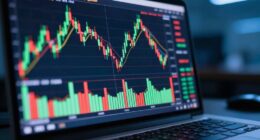In an arena cluttered with overhyped promises and incremental innovations, the alliance between World Liberty Financial and Re7 Capital audaciously stakes a claim to stabilize the USD1 stablecoin—an asset whose modest $2.2 billion market cap and tentative adoption barely register against industry behemoths like Tether—by deploying institutional-grade risk management and vault technology on Euler and Lista platforms, a move that, while theoretically sound, confronts the persistent question of whether strategic partnerships and substantial capital injections can genuinely elevate a fledgling stablecoin amid entrenched competition and regulatory uncertainty. This collaboration also signals increased institutional interest in stablecoin ecosystems, reflecting a broader trend of major investors entering the market. The project’s success will depend on navigating the complex regulatory challenges that often hamper innovative blockchain ventures.
This collaboration, heralded as a DeFi renaissance, hinges on Re7 Labs’ promise to offer sophisticated risk protocols tailored for high-value transactions, bolstered by a $10 million funding infusion from Re7 and Hong Kong’s VMS Group—marking the latter’s inaugural crypto foray. The vault’s conceptual design aims to bolster USD1’s utility on Binance’s BNB Chain, hoping to transcend its current niche use, exemplified by a $2 billion deal between MGX and Binance, a transaction that, while headline-grabbing, remains an outlier rather than a trendsetter. Aqua 1 Foundation’s $100 million investment further underscores the project’s growing backing from major investors.
DeFi revival hinges on Re7’s risk protocols and $10M backing, aiming to expand USD1’s niche on Binance BNB Chain
Yet, the shadow of Tether looms large, its gargantuan $158 billion market cap dwarfing USD1’s ambitions and casting doubt on whether institutional-grade innovation alone can disrupt entrenched dominance. Adding political flavor, World Liberty carries the Trump family’s imprimatur, a fact that, far from a mere footnote, colors investor enthusiasm and injects geopolitical risk into an already volatile market.
While the anticipated US regulatory framework might offer a tailwind, the volatile legal landscape and a cautious SEC temper expectations. Ultimately, this alliance’s success will rest less on lofty rhetoric and more on tangible market traction—a steep climb for a project seeking to convert bold vision into durable market relevance.









